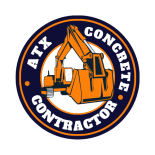Concrete cutting is a vital process in construction and renovation projects, facilitating modifications or demolitions in existing structures or creating precise openings for new constructions. However, it’s equally essential to grasp the budget considerations associated with this task to ensure a successful and cost-effective project execution.
Factors Affecting Budget in Concrete Cutting
Different types of concrete cutting methods involve distinct requirements and complexities:
Flat Sawing: Flat sawing is the process of cutting horizontal surfaces like roads or floors. It’s a common method used for creating expansion joints, removing damaged pavement sections, or installing utilities.
Wall Sawing: Wall sawing involves creating precise openings in vertical structures such as walls. This method is often employed for creating doorways, windows, or HVAC openings in concrete walls.
Core Drilling: Core drilling is utilized to make round holes in concrete for various purposes, such as installing plumbing, electrical conduits, or creating openings for anchoring bolts.
Equipment Costs: The costs associated with concrete cutting equipment play a significant role in budget considerations:
Saw Blades and Drill Bits: The quality, type, and quantity of saw blades and drill bits required depend on the specific cutting needs. Different materials and thicknesses of concrete might demand specialized blades or bits, impacting overall costs.
Cutting Equipment: The cost of cutting equipment varies based on its power, size, and capabilities. Larger or more powerful machines capable of handling thicker or denser concrete typically come at a higher cost.
Labor Expenses: Labor constitutes a significant portion of the budget due to various factors:
Skilled Operators: Experienced and skilled operators may command higher wages due to their expertise in handling specialized cutting equipment and executing precise cuts.
Work Hours: The complexity and size of the project directly influence labor costs. Larger or more intricate cutting tasks might require more labor hours, impacting the overall budget.
Material Disposal: Disposing of concrete debris and managing waste involves certain costs:
Waste Management: Removing and disposing of concrete debris generated during cutting is an essential but cost-incurring aspect of the project.
Recycling: Exploring possibilities to recycle the cut concrete for other uses can mitigate disposal costs and environmental impact.
Safety Measures: Ensuring safety for the workers and compliance with standards incurs additional costs:
Safety Equipment: Investing in proper safety gear for workers, such as helmets, goggles, gloves, and protective clothing, is crucial and adds to the overall project expenses.
Compliance: Adhering to safety standards set by regulatory bodies involves training, certifications, and inspections, contributing to the project’s cost.
Project Complexity: The complexity of the project introduces specific cost considerations:
Access Challenges: Difficult-to-reach areas may demand specialized equipment or additional setup time, impacting both time and budget.
Thickness and Density of Concrete: Harder or thicker concrete might require more time, specialized tools, or techniques, adding to the project’s overall cost.
Timeframe: The urgency and timeframe within which the project needs to be completed can affect the budget:
Urgency: Expedited projects might require overtime work or prioritization, which can result in higher labor costs and possibly increased equipment usage, impacting the budget.
Strategies for Cost Optimization
Conducting a comprehensive site survey involves examining various aspects like concrete types, thicknesses, and site conditions. Understanding these factors helps in precise planning and estimating required resources.
Engaging professionals with expertise in concrete cutting enables accurate cost estimation. Their insights can aid in foreseeing potential challenges, allowing for proactive planning and budget allocation.
Selecting the right tools without over-specification is crucial. Overly powerful or advanced equipment might exceed project requirements, unnecessarily inflating costs.
Assessing the cost-effectiveness of buying versus renting machinery is essential. For occasional or specific projects, renting could be more cost-efficient than purchasing expensive equipment that may not be consistently utilized.
Optimizing schedules to allocate time effectively minimizes labor costs. Efficient planning reduces idle time for both equipment and labor, ensuring a streamlined workflow.
Precise cutting techniques help in minimizing excess concrete removal. Accurate measurements and cutting procedures reduce material waste, subsequently lowering disposal costs.
Prioritizing safety not only safeguards workers but also helps in avoiding potential accidents that could lead to additional expenses. Investing in safety training, equipment, and adherence to regulations is a crucial aspect of cost management.
Regular maintenance of cutting equipment reduces the risk of breakdowns during operations. Proactive maintenance schedules prevent unexpected downtimes and associated repair costs.
Purchasing tools or equipment in bulk often attracts discounts. Negotiating with suppliers for bulk purchases can result in cost savings, especially for frequently used consumables.
Establishing enduring relationships with reliable suppliers can lead to cost benefits. Such partnerships may offer preferential pricing, better service, or access to new cost-efficient technologies.
Conclusion:
Understanding and accounting for the various elements impacting the budget in concrete cutting is pivotal for successful project management. Through meticulous planning, appropriate resource allocation, and a focus on safety and efficiency, construction endeavors can effectively manage costs without compromising quality.
